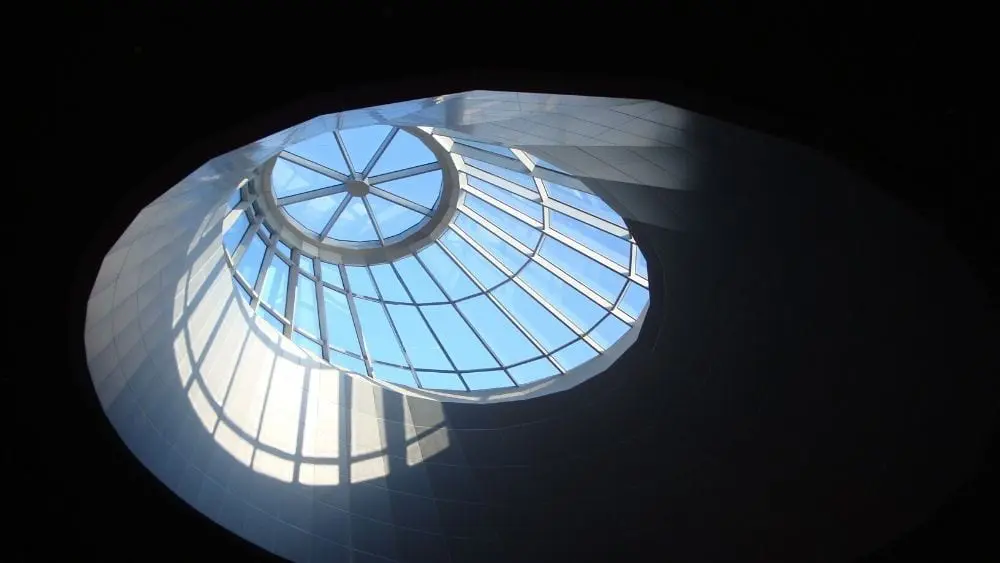
Skylights are a frequently overlooked lighting option available that more homeowners should take advantage of when planning a new construction home. Adding a skylight system is a great way to visually open up sections of your new home by allowing natural sunlight to shine through above and beyond what standard windows offer — and may help lower your utility costs. With several styles and options to choose from, selecting the correct skylights for your needs can be daunting, but we’ve outlined the primary models and options here to help in your decision-making.
Common Skylight Choices
Your first step is to determine exactly where you would like to have skylights installed as this will enable you to better select the exact type you need for each specific location. Here are the most common areas for adding skylights into your construction plans.
Kitchen: Skylights are an excellent option for brightening up a kitchen. The added natural light may allow you to install extra shelving or cabinets versus sacrificing wall space for exterior windows. Ventilated skylights can also be installed to help release odors during cooking.
Bathrooms: Bathrooms are frequently among the darker rooms in your home as many, such as half baths, may not have access to exterior windows. Skylights are an excellent way to introduce natural light without sacrificing privacy. A skylight system that offers various ventilation options can also help keep a bathroom well ventilated and mold free. For smaller bathrooms that may not have access to large ceiling space, smaller solar tube skylights are a great option.
Bedrooms: Skylights are an excellent way to view the night sky, which makes them a great choice for bedrooms. Skylight systems can include curtains and tinting options to block out exterior lights at night that could disturb your sleep.
Living and family rooms: These large rooms may benefit the most from skylights, which can help to alleviate lighting issues in a larger space and assist with heating and cooling challenges when properly selected and installed. As with bedrooms, selecting skylights with an optional blind feature may be necessary to ensure seating areas are not oversaturated with light during certain parts of the day and seasons of the year.
Converted attics and bonus rooms: Skylights are an excellent way to provide natural lighting to these rooms that otherwise may not have exterior windows.
Selecting the Size and Shape
Since the majority of skylight systems are installed in rooftops, the sizes and shapes are often standardized to better accommodate the common framing structures of a residential roof. Custom sizes and shapes are available but may include additional expense if the roof’s structure needs to be altered during installation. For determining the proper skylight size for a specific area, industry standards say to estimate 1 square foot of skylight surface area for every 20 feet of floor space below. For areas already receiving abundant natural light through standard windows, your skylight size should not exceed 5 percent of the total floor space. Increase your skylight surface area to 10 percent or 15 percent of total floor space in rooms that do not include many windows or other natural light sources.
Selecting the Right Locations
You should also plan your skylight locations according to how the sun will change location in the sky as the seasons change and how this will fit the orientation of your home. The angle of your roof also comes into play with this challenge as it also affects how much sunlight each skylight receives throughout the year. The obvious starting point related to skylight locations is to work with the rising of the sun in the east and the setting in the west. Homeowners wanting additional light or warmth in the morning or evening hours should use this basic principle to their install advantage. Those seeking a consistent and diffused light source would do well to select north-facing roof locations. South facing skylights can help add additional warmth and light in the winter months but may be challenging in the summer when extra heat is not desired. Skylights installed underneath shade trees may not allow in the amount of natural light intended so be mindful of this possibility as you plan your install locations.
Primary Skylight Models
There are three primary types of skylights to choose from with several variations within each style to widen your options.
Fixed: A fixed skylight is a completely sealed system designed to only allow the passage of sunlight and does not include any type of air ventilation. It is available in various size ranges, which typically are geared around the common framing structures of a residential roof.
Ventilated: This system is similar to a fixed skylight but includes the ability to open in some manner to allow the passage of air. This style is often referred to as “sky or roof windows” since many models include the ability to open either manually or through a mechanical system tied to a wall switch. Solar-powered ventilated systems can be coupled with a thermostat system to help regulate room temperatures and tied to a rain gauge for automated closing during storms to prevent leaking. A common complaint heard from new homeowners selecting ventilated skylights is the difficulty experienced when manually opening and closing them, especially in hard to reach locations such as high ceilings that may require the use of a large pole. This is something to take into consideration when planning out your install locations and choosing between fixed and ventilated models.
Tubular or solar tubes: This is a smaller skylight designed for spaces that may not require as much sunlight or cannot accommodate a larger install due to roof or attic limitations. Solar tubes will not provide the same surface area as standard skylights but can be an excellent way to brighten up tight spaces in need of natural light such as interior bathrooms.
Skylight Surface Materials and Shapes
Skylights are manufactured with either glass or plastic/acrylic surfaces. While plastic may be a good choice if you’re on a budget or when installation weight is a concern, glass is usually the preferred option. Glass is more durable, and plastic surfaces are more prone to discoloration and scratches over time. Glass skylights also are available in a larger variety of glazing and ultraviolet (UV) coating options, which help to better regulate temperatures while also preventing harmful UV rays from discoloring furniture and flooring. Here are a few of the most common glass skylight surfaces available and the benefits they provide. (All models listed include tempered glass for improved strength and safety.)
- Double pane insulated—base model consisting of two glass panes with air space in between to improve energy efficiency
- Double pane insulated with low-e (low-emissivity) coating—the next level up from the base model; includes invisible coatings on the glass to reduce heat transference in both winter and summer months. Low-e coatings also help reduce UV light that can discolor or bleach floors and furniture.
- Double pane insulated with low-e coating, argon gas and bronze tint—includes all benefits as the previous model as well as inert argon gas inserted between panes to better insulate the skylight and further reduce heat transference. Optional bronze tinting may be added for additional solar heat insulation.
A skylight’s exterior shape does not always have to match the flat surface installed beneath it. Various exterior cover shapes are available such as domed, arched and pyramid. These cover shapes can aid in the prevention of debris collecting on the skylight below and blocking sunlight, an important consideration when skylights are located beneath trees that shed leaves throughout the year or when snow accumulation is a concern during the winter.
Safety Note: If you live in a region that gets considerable rooftop snow accumulation, be certain to purchase a skylight system rated to hold the anticipated additional weight if you will not be able to manually remove snow and debris as needed. Homes built within coastal regions that could be affected by hurricanes should install skylight systems designed to resist higher wind speeds. Be sure to consult with your builder during the planning process to ensure the proper skylights are selected and installed to match your region’s weather patterns.
Improved Energy Efficiency
Skylights can also help improve a home’s energy efficiency, which leads to lower monthly utility costs. The most obvious energy enhancement is related to electrical light usage. As skylights allow more natural light into a room, less electric lighting will be required to achieve the same overall brightness resulting in less energy being consumed. Since electrical lighting also produces heat, reducing usage will allow rooms to be cooled faster during warmer months providing additional energy savings. To locate an energy-efficient skylight model, seek out one with an Energy Star rating.
Energy-efficient skylights include multilayered glass panes, UV coatings, tinting, ventilation systems and blinds. Higher-end skylights can automate both the opening and closing of air vents as well as the raising and lowering of blinds to more efficiently heat and cool a room with all mechanical functions completely powered by solar energy. To help negate the higher costs of these Energy Star-rated, solar-powered skylight systems, you may be able to receive a 30 percent federal tax credit related to the purchase and installation of pre-authorized models. The Energy Star website has a listing of all eligible models, and you should consult with a tax professional on how to properly claim the tax credit.
As you plan your new home, be sure to consider the improved design elements and energy efficiency found in current skylights systems. With a wide assortment of models, from smaller solar tubes to larger fully automated solar powered systems, there is a skylight out there to fit your needs and help let the sunshine in.

Brian Ford spent more than a decade in the specialty appliance retail industry and now devotes his time to freelance print and video content creation. Brian is also a contract consultant within the call center industry. In his free time, he operates a YouTube channel specializing in instructional guitar videos that he composes and produces at his home studio in Austin, Texas.
 How Builders Make New Homes More Spacious, Inside and Out
How Builders Make New Homes More Spacious, Inside and Out